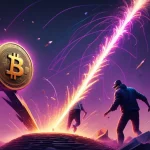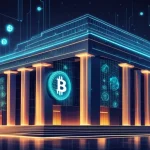Ripple’s 1B XRP Unlock and SEC Win Spark ETF Hype, Price Surge to $3.30

Ripple Drops 1B XRP Unlock Bomb: SEC Win Fuels ETF Hype and Price Surge
Ripple has ignited fresh excitement in the crypto sphere by unlocking 1 billion XRP from escrow on August 9, silencing a week of wild community rumors about a potential halt to its monthly token releases. Just a day prior, a landmark $125 million SEC settlement reshaped XRP’s future, sending its price soaring to $3.30 and stoking hopes for an ETF. But with whale sell-offs and lingering centralization concerns, is this a turning point or just another flash in the pan?
- Massive Unlock Confirmed: 1 billion XRP released on August 9, maintaining Ripple’s supply strategy.
- Legal Victory: $125 million SEC settlement on August 8 clears major regulatory hurdles, boosting market sentiment.
- ETF Speculation: Community and analysts see legal clarity as a stepping stone to institutional adoption.
XRP Unlock: Business as Usual or Clever Maneuver?
Ripple’s latest unlock of 1 billion XRP on August 9 isn’t a surprise if you’ve been following their playbook since 2017. Back then, they locked 55 billion XRP in escrow—a kind of digital time-locked bank account—to prevent flooding the market and crashing the price. Each month, 1 billion tokens are released to fund operations like on-demand liquidity (ODL) for cross-border payments, partnerships, and ecosystem growth. On August 9, after a slight delay from the usual first-of-the-month drop, Ripple executed the release in three transactions worth about $3.28 million, as tracked by Whale Alert data. Typically, they send 650-800 million XRP back into escrow for future releases, while allocating 200-350 million for immediate use. With roughly 35.6 billion XRP still locked up according to XRPscan, we’re looking at decades of these monthly events unless Ripple shifts gears.
The delay in timing sparked chatter across platforms like X, especially after Ripple locked 700 million XRP early in August without an instant release. One wallet tracker captured the community’s curiosity, noting:
“A bit intriguing if all of a sudden it just stopped.”
Turns out, there was no pause—just a tweak. Since March, Ripple has moved away from rigid schedules, likely to outsmart traders who front-run these unlocks, dumping XRP in anticipation and creating predictable sell pressure, as discussed in community tokenomics debates. It’s a small but savvy shift, showing they’re not just robots following a script. For newcomers, think of escrow as a safeguard: without it, Ripple could dump massive amounts of XRP overnight, tanking the price faster than a Ponzi scheme imploding. Historically, this system has had mixed success—past unlocks have sometimes triggered dips, though the market often stabilizes as demand absorbs the supply. This time, no immediate crash ensued, but the delayed timing hints at Ripple playing a longer game, especially with bigger news on the horizon.
SEC Settlement: A Game-Changer for XRP
While the unlock grabbed headlines, the real bombshell dropped on August 8, when Ripple finalized a $125 million settlement with the SEC, ending a brutal lawsuit that started in December 2020. The core issue? Whether XRP should be classified as a security, which would slap it with suffocating regulations and potentially kill its market appeal, as detailed on Ripple Labs’ background. The resolution, including restrictions on institutional sales, isn’t a total exoneration, but it’s close enough to spark an 11% daily price surge to $3.30, pushing XRP’s market cap above $180 billion and back into the top five cryptocurrencies. This isn’t just a win for Ripple—it’s a signal to the broader crypto space that regulatory clarity might not be a pipe dream after all.
The implications stretch beyond XRP’s chart. This settlement could set a precedent for other projects tangled in legal battles, like Coinbase or Binance, potentially easing the SEC’s iron grip on classifying tokens as securities. For Ripple, it’s a lifeline: institutional investors, previously spooked by legal uncertainty, might now see XRP as a safer bet, as suggested by recent market analysis. The timing of the unlock, just a day later, feels almost poetic—did Ripple delay it to ride the wave of positive sentiment? It’s speculative, but not far-fetched. Legal clarity often translates to market confidence, and with XRP reclaiming its spot among crypto giants, the momentum is palpable. Still, let’s not pop the champagne yet—regulatory battles are rarely a one-and-done deal, and the SEC could still throw curveballs down the line.
Market Moves: Bulls Charge, Whales Dump
Post-settlement, XRP’s price action has been a rollercoaster worth watching. Sitting at $3.30, it’s showing strength with a bull flag pattern on technical charts—a setup that, for the uninitiated, looks like a brief pause before the price sprints upward again, much like a runner catching their breath mid-race. Futures trading volume has spiked 200%, signaling heavy betting on further gains. Some analysts are eyeing $4 as the next short-term target, with wilder medium-term predictions floating between $8 and $15 if the rally holds. Now, before you mortgage your house on these numbers, a word of caution: crypto price predictions are often glorified guesswork, peddled by shills on social media. Take them with a grain of salt, or better yet, a whole shaker.
That said, not everyone’s buying the hype—literally. Large holders, or whales, have dumped $1.9 billion worth of XRP since the rally, adding short-term selling pressure. It’s the crypto equivalent of cashing out at the casino right after a big win—cowardly, perhaps, but hard to blame them for locking in profits. Surprisingly, buy-side demand seems to be soaking up these sales, keeping XRP afloat for now. Trading data shows resilience, but volatility is crypto’s middle name, and another whale dump could easily sour the mood, a concern echoed in online discussions. This tug-of-war between bullish momentum and profit-taking underscores a harsh truth: no amount of legal wins or ETF buzz can shield XRP from the market’s bipolar swings.
ETF Dreams and Institutional Nods: Hype or Reality?
The XRP community is buzzing louder than a beehive over the possibility of an exchange-traded fund (ETF). For those new to the concept, an ETF allows traditional investors to gain exposure to XRP without directly owning it—think of it as buying a slice of the crypto pie through a stock exchange. With Bitcoin and Ethereum ETFs already paving the way in 2023 and 2024, and the SEC settlement boosting XRP’s odds (analysts now call the chance “materially higher”), the excitement isn’t baseless, as highlighted in recent ETF speculation updates. Ripple’s strategic tweaks, like flexible unlock timings and disciplined escrow management, could be groundwork for such a move, signaling to regulators and institutions that they’re serious about stability.
Concrete signs of institutional interest are piling up. Galaxy Digital holds $34 million in XRP, a bold vote of confidence from a major player. Meanwhile, South Korea’s BDACS is rolling out custody solutions for top exchanges like Upbit and Coinone, showing XRP’s global traction, as reported in institutional adoption news. These aren’t just feel-good headlines—they’re steps toward mainstream integration, the kind that could unlock billions in capital if an ETF materializes. But let’s pump the brakes: regulatory hurdles for ETFs are a minefield, and XRP’s centralized structure might still raise red flags with purists and gatekeepers alike, a point debated on forums regarding SEC impact on ETF chances. Plus, an ETF could invite more oversight, potentially stifling the very innovation crypto stands for. It’s a double-edged sword—mass adoption versus the risk of becoming just another Wall Street toy.
Ripple and the Decentralization Dilemma
As someone who leans toward Bitcoin maximalism, I’ll be blunt: Ripple’s grip on XRP rubs me the wrong way. Unlike Bitcoin, where supply is hard-capped at 21 million and issuance is dictated by decentralized mining, Ripple controls a massive chunk of XRP through escrow and decision-making. It’s less a peer-to-peer currency and more a corporate asset with blockchain flair—hardly the cypherpunk dream of dismantling centralized power. Ethereum, for all its flaws, at least distributes control via staking and a sprawling developer community. Ripple? It feels like a tech company playing dress-up as a decentralized protocol, especially with 35.6 billion XRP still under their lock and key.
That said, let’s give credit where it’s due. XRP’s niche in cross-border payments—via tools like ODL—fills a gap Bitcoin doesn’t touch. BTC is digital gold, a store of value, not a high-speed transaction layer for global finance. Ripple’s model, centralized or not, appeals to banks and institutions wary of volatility, offering a bridge between traditional finance and blockchain. If their legal wins and potential ETF push more players into the crypto space, even indirectly, it’s a net positive for disruption. But I’ll never fully buy into XRP as “the future of money” when it’s tethered to a single entity’s whims. Disruption, yes—but on whose terms?
Key Takeaways: Unpacking Ripple’s Latest Moves
- What does Ripple’s 1 billion XRP unlock on August 9 mean for its strategy?
It reaffirms their commitment to controlled supply via escrow, balancing market stability with funding needs for on-demand liquidity and ecosystem growth. - How has the SEC settlement reshaped XRP’s outlook?
The $125 million deal on August 8 lifts a major regulatory cloud, driving an 11% price jump to $3.30 and fueling optimism for institutional adoption. - Why are whale sell-offs a red flag despite bullish momentum?
A $1.9 billion dump by large holders creates short-term pressure, reminding us that profit-taking can derail rallies, even with strong demand. - Is an XRP ETF a realistic possibility post-settlement?
Analysts see higher odds now, and it could bring billions in capital, though regulatory barriers and centralization concerns might delay or derail approval. - How does Ripple’s centralization stack up against Bitcoin?
Ripple’s control over XRP supply via escrow contrasts sharply with Bitcoin’s decentralized, hard-capped model, raising questions about its long-term ethos. - What broader impact could Ripple’s legal win have on crypto?
It may set a precedent for other projects facing SEC scrutiny, potentially easing token classification battles and encouraging regulatory clarity industry-wide.
Ripple’s latest chapter is a messy, thrilling snapshot of crypto’s bigger fight—balancing innovation with regulation, centralization with freedom, hype with hard reality. XRP isn’t Bitcoin, and it’s not trying to be, but with a legal burden lifted and institutional eyes turning, it’s carving a contentious spot in this financial upheaval. Whale dumps and structural flaws keep the risks real, yet the ETF whispers and price momentum hint at a contender clawing its way up. Whether you’re a BTC purist or an altcoin agnostic, Ripple’s moves are worth watching. The next few months could redefine its place in this wild, unruly space.



